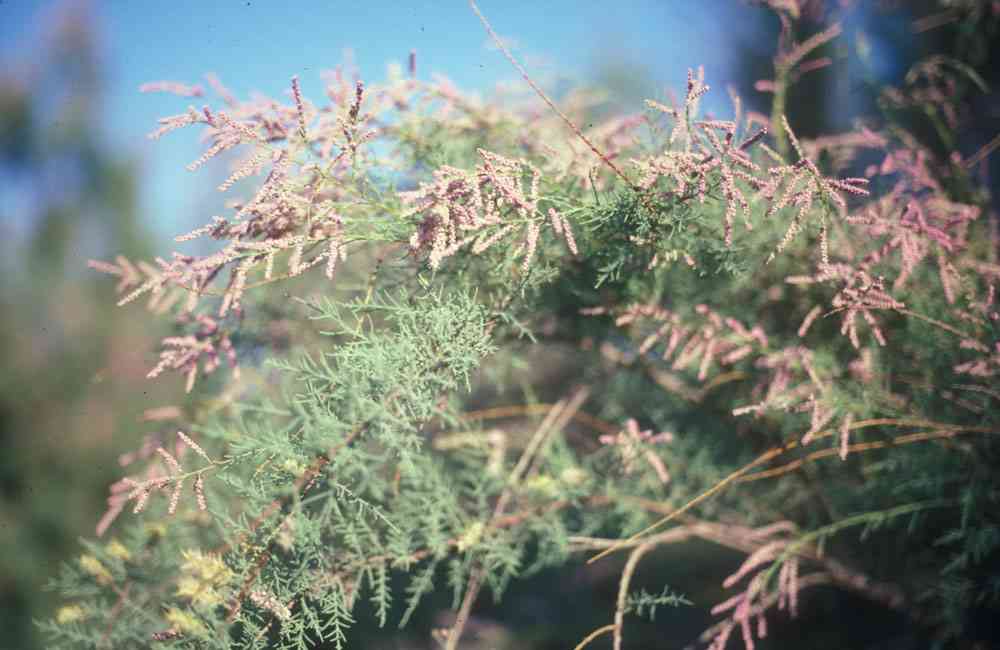 The plant genus Tamarix is comprised of about 54 species native to North Africa, the Mediterranean, and the Middle East. Popularly called "tamarisk" or "saltcedar," it usually grows as a woody shrub or small tree in areas where water is at or near the surface.
The plant genus Tamarix is comprised of about 54 species native to North Africa, the Mediterranean, and the Middle East. Popularly called "tamarisk" or "saltcedar," it usually grows as a woody shrub or small tree in areas where water is at or near the surface.
Starting in the 1850s, several species of tamarisk were imported to the United States as ornamentals and for use in erosion control. Since its introduction, tamarisk has quickly spread into natural wetlands, where it tends to form dense thickets along streams and springs, displacing native trees such as cottonwood, willow and mesquite. Tamarisk has invaded almost all watercourses and other wetland habitats throughout the Southwest, taking over more than one million acres of wetland.
Tamarisk is distinguished by its feathery, needle-like leaves and numerous small, pink flowers at the ends of the branches. Up to 500,000 small, windblown seeds can be produced per plant.
The tamarisk is highly adapted to arid climates. It thrives in very saline and nutrient-poor soil. During the spring it can grow as much as one foot per month. It spreads readily by seed and by root, trunk, and branch sprouts.
Tamarisk can usually out-compete native plants for water. A single, large tamarisk can transpire up to 700 gallons of water per day. In many areas where watercourses are small or intermittent and tamarisk has taken hold, it can severely limit the available water, or even dry up a water source.
Tamarisk can grow in salty soil because it can eliminate excess salt from the tips of its leaves. When the leaves are shed, this salt increases the salinity of the soil, further reducing the ability of native plants to compete. Because of its ability to spread, its hardiness, its high water consumption, and its tendency to increase the salinity of the soil around it, the tamarisk has often completely displaced native plants in wetland areas.
From a wildlife point of view, the tamarisk has little value and is usually considered detrimental to native animals. The leaves, twigs and seeds are extremely low in nutrients, and, as a result, very few insects or wildlife will use them. In one study along the lower Colorado River, tamarisk stands supported less than 1% of the winter bird life that would be found in a native plant stand. Because of the tamarisk's ability to eliminate competition and form single-species thickets, wildlife populations have dropped dramatically.
At White Sands National Monument, tamarisk has invaded many interdune areas, where water is near the surface, threatening to choke out native vegetation.
It also threatens the White Sands Pupfish, which naturally occurs only in a few springs and one stream in the Tularosa Basin. Tamarisk invasion now threatens to dry up this pupfish habitat.
Tamarisk is difficult to eradicate. It resprouts readily after cutting or burning. Research and many programs are now in place to reduce or eradicate tamarisk, and laws are being enacted to eliminate its sale and importation. At Death Valley National Park, it was found that, when tamarisk was eradicated and native species allowed to grow, water returned to wetland areas and wildlife again thrived.
